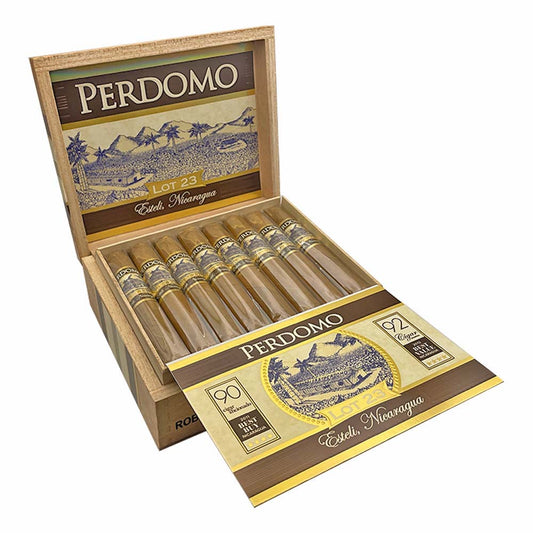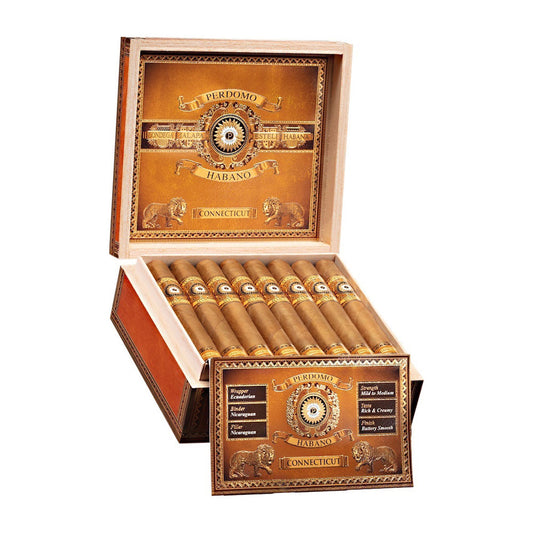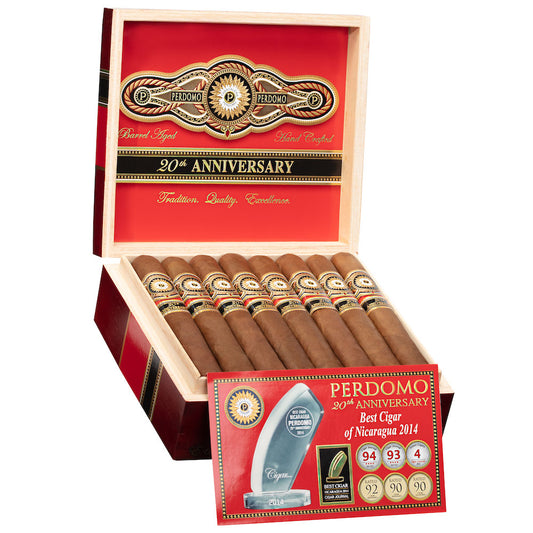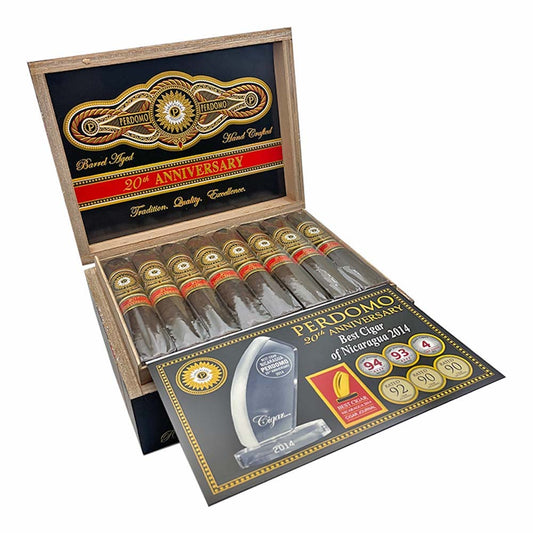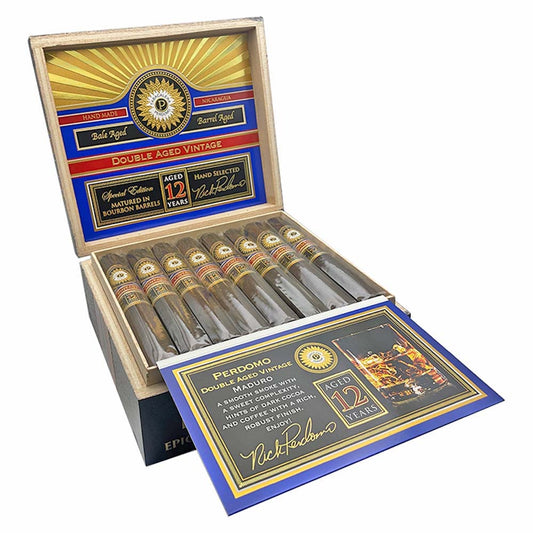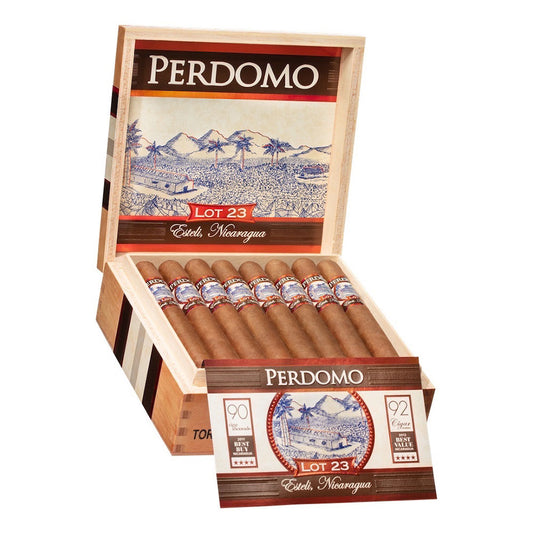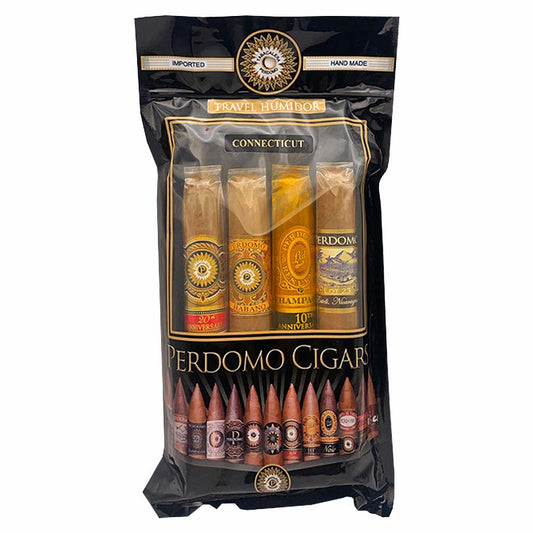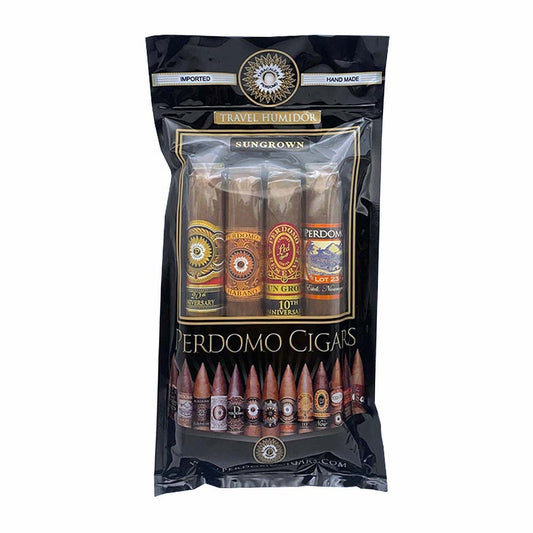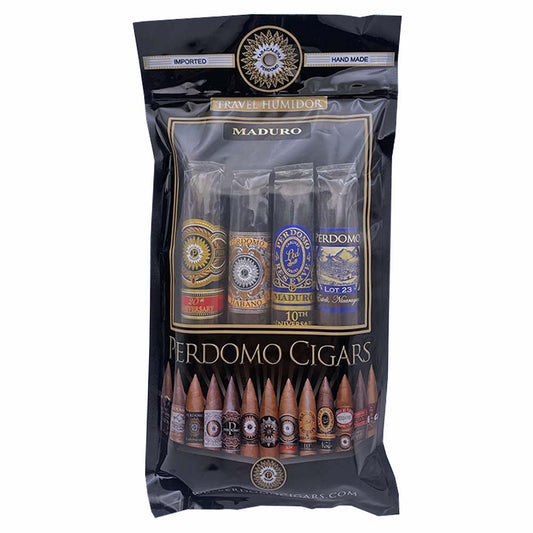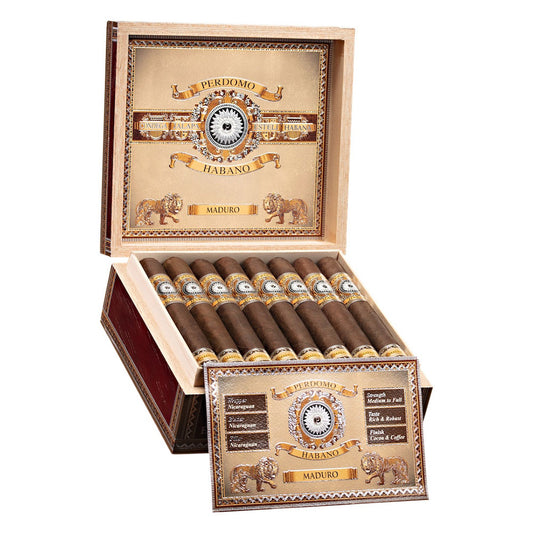Perdomo Cigars is a proud but humble cigar brand whose story sounds like something out of a movie. Building one of the largest and most prestigious brands of cigars isn’t an easy feat, but the Perdomos have been fighters from the beginning. Their story starts with Silvio Perdomo and his son, Nick Perdomo Sr., who worked in Cuba for H. Upmann and Partagas during the 1940s.
When Castro came to power, Silvio was imprisoned by the regime, and Nick raised arms and fought against Castro as a guerrilla until he was wounded. Ultimately, the family made the difficult decision to leave their homeland to start a new life in the U.S. This move forced them to leave the cigar industry temporarily. Still, they would return one day in dramatic fashion.
Expanding Perdomo’s Reach and Influence
Nick’s son, Nick Perdomo Jr., was a proud American who wanted to serve his country as an air traffic controller, and his time in the U.S. Navy instilled in him the importance of attention to detail and efficiency. Equipped with the core values of hard work and dedication that he inherited from his father and grandfather, Nick Perdomo Jr. started a very small cigar company out of his garage.
Beginning with just three rollers, Perdomo launched his company, working day and night to package and roll cigars while also working his full-time job to finance his vision. With some initial success, Nick expanded, but the high cost of producing cigars in the U.S. made it impossible to maintain an affordable and high-quality product.
In 1997, due to the high costs and with the help of his father, Nick Perdomo Sr., Perdomo moved production to Estelí, Nicaragua, just in time for the cigar boom of the 1990s.
Revolutionizing the Cigar Industry
Perdomo has never been afraid to pave his own path and ignore trends. In the mid-1990s, when the whole world was smoking round cigars, he released the Perdomo Cigar, one of the first box-pressed cigars on the market.
The 90s were a great time if you liked to smoke mild cigars, but Nick believed most mild cigars were bland and lacked the complexity and smoothness that should be present in every cigar.
While most popular cigar makers were using Connecticut wrappers and delicate Dominican fillers, Nick went the other way, utilizing Sumatra wrappers and Central American fillers to create more robust and spicier blends that appealed to milder smokers as well as those interested in a full-bodied experience.
Perdomo’s big and bold blends attracted seasoned cigar aficionados and cigar critics. One of the people who noticed Perdomo’s hard work was Cano A. Ozgener, the head of CAO, one of the largest cigar brands in the market. CAO needed a new manufacturing partner, and Ozgener decided to team up with Perdomo. Together, they produced the CAO L’Anniversaire.
The partnership was a great success, helping further Perdomo’s reputation for quality and expanding the company’s operations. Today, Perdomo is one of the largest manufacturers of cigars in Nicaragua.
Perfecting Every Step of the Cigar-Making Process
As Perdomo Cigars grew, so did his operation, and Nick came to the conclusion that it was important to control the process from start to finish, investing profits to buy land, employ the best farmers, and ultimately take full control of the cigar-making process—even going so far as to produce boxes and cellophane wrappers in-house.
Nick found that having complete control enabled him to ensure the highest quality at the best price. He claims that each cigar goes through a rigorous, 3052-step process. From start to finish, quality control supervisors carefully watch each stage of the process to ensure proper care is taken with every cigar made.
Every leaf is hand-checked to maintain consistency among blends, and the company utilizes a combination of traditional practices and technology to make sure every cigar has an even burn and a consistent draw.
Nick Perdomo Jr. places high value on proper training, ensuring his employees can roll cigars to the high standards he upholds. He understands mistakes happen, and sometimes things aren’t perfect the first time—so if a cigar doesn’t pass the initial draw tests, the roller is allowed to fix the cigar. However, employees whose cigars fail a second time are sent home for ten days without pay.
The extensive training and high wages, combined with the opportunity to lose those wages, keep rollers engaged and focused on producing a top-quality cigar for their customers. By the time a box of Perdomo Cigars is shipped out, each cigar has been inspected at least seventeen times.
Nick Perdomo’s obsession with quality and passion for cigars ensures that smokers receive a high-quality, smooth, complex, and rich experience at an affordable price. Perdomo strives to provide cigars that can be enjoyed by mild and full-bodied smokers alike.
The PERDOMO Way
While there are similarities in how manufacturers produce cigars, each manufacturer is slightly different. Perdomo prides itself on taking 3,054 steps to make a single cigar. Listed below are a few major steps along the path that every Perdomo Cigar takes.
Hand Harvesting at Finca Natalie Farm:
Perdomo Cigar Farm
Named after Nick and Janine's daughter, Finca Natalie is Perdomo's most prestigious farm. The farm is located in Esteli Nicaragua and harvests almost 39 million tobacco leaves a year. Finca Natalie has four curing barns on the property, that each hold just under 10 million leaves. Each leaf that is harvested at the property is harvested, inspected and hung for curing by hand.
Greenhouse Protection:
Perdomo Cigar Greenhouse
Tobacco plants are sensitive when they are young. That is why they begin their lives protected in a greenhouse. Both the ceiling and the walls are constructed of special materials that filter out some harmful UV rays, insects, airborne viruses and molds. The fine cloth walls maintain protection while allowing adequate airflow and the plants to grow strong.
Seedling Inspection:
Perdomo Cigar Seedling Inspection
After a certain amount of time, the plant is ready to be transplanted to the fields. Before they are transplanted, each plant is examined for posture, color and root structure development. Perdomo has high standards for these criteria, and if the plant is not perfect, it is removed. This inspection process helps maintain quality and consistency in Perdomo Cigar blends.
Water Filtration and Eco-Friendly Irrigation System:
Perdomo Cigar Irrigation System
Water is the lifeblood of the tobacco plant. Using a custom water filtration system, Perdomo Cigars ensures that no potential contaminants reach their plants. Water is delivered to plants using a drip irrigation system. This system ensures that the plants receive the proper amount of nutrients while protecting the natural water resources on the farm.
Traditional Oxen Planting:

Perdomo Cigar Oxen Plows
Perdomo farm rows are plowed by hand using Oxen to aerate the soil. Aerating the soil allows for strong roots to develop and absorb nutrients so the plant can produce large healthy leaves. By choosing to not use mechanical plows this also helps limit the carbon footprint of the farm.
Hand Stringing Tobacco:
Perdomo Cigars Hanging Tobacco
During stringing each leaf is hand inspected for quality. Different primings of tobacco are color-coded when they are strung onto the Eucalyptus sticks in the Perdomo curing bars.
Precisely Cured:

Perdomo Cigar Curing Process
Throughout the curing process, the tobacco leaves slowly lose their chlorophyll. Perdomo spaces out the different primings according to the size of the leaf. This allows the exact humidity and temperature of the barn to be preciously controlled. Over the next 45-60 days, the natural curing process will take each individual leaf to the perfect color and texture.
Pilón Fermentation:

Perdomo Pilons
After curing, Perdomo tobacco is then fermented in a Pilón for at least three years. Despite weighing around 3,000 pounds, each Pilón is deconstructed and reconstructed multiple times.
This rotation allows for the tobacco to ferment evenly and humidity and temperature to be preciously maintained. This attention to detail ensures every leaf ferments to the perfect aroma, color, flavor and texture.
Meticulous Inspection by Experts:

Perdomo Cigar Fermentation Inspection
Tobacco legend Aristides Garcia and his staff of experts oversee the fermentation process. Each leaf is inspected by hand and held to Perdomo standards. These time-honored traditions ensure consistency in each cigar blend.
Additional Bourbon Barrel Aging:

Perdomo Cigar Bourbon Barrels
Perdomo takes an additional step by aging its tobacco in bourbon barrels. The char in American white oak barrels helps caramelize the leaf's color and flavor, producing tobacco that is bursting with a smooth taste and rich flavor.
Custom Wrapper Preparation:
Perdomo Cigar Wrapper Prep
Perdomo cigar wrappers go through a custom-made system to prepare them for use. This system opens the hands of tobacco to absorb the humidity. This is a slow process to ensure that the wrappers are not damaged or bruised as they are humidified.
Precise Bunching:

Perdomo Cigar Buncher
Perdomo uses only long filler tobacco in its cigars. Each professional buncher is trained to place the seco, viso and ligero leaves in the correct position. This uniformity ensures a consistent flavor, draw and burn in Perdomo Cigars.
Draw Testing Each Cigar:
Perdomo Cigar Draw Testing
Perdomo Cigars draw tests 100% of daily production. This attention to detail takes time but ensures every cigar meets high standards.
Wrapped With Care:

Perdomo Cigar Wrapper Application
Each Perdomo Cigar wrapper leaf is cut by hand using a traditional chaveta before application. After trimming, skilled rollers apply the wrapper by hand to the bunch that has passed draw testing. This is done on a stainless steel cutting board to ensure accuracy and cleanliness.
Final Inspection:

Perdomo Cigar Inspection
After applying the wrapper, the finished Perdomo Cigar is hand-inspected again. This ensures that the wrapper, cap, and weight are up to Perdomo standards. After inspection, the cigar is sent to the aging room. Each cigar is inspected 17 times before being sent out for distribution.
Complete Perdomo Cigar Aging:

Perdomo Cigar Aging Rooms
The finished Perdomo cigars are aged for a minimum of six to eight months, depending on the wrapper used. This is done in the highly-guarded Perdomo aging rooms under strict temperature and humidity standards. This additional aging allows for the flavors to marry together to create the perfect cigar.
Hand Banding Each Cigar:

Perdomo Cigar Banding
Each Perdomo Cigar is banded, wrapped in cellophane, and boxed by hand. This process occurs after the Perdomo cigars have been color-sorted according to their brand.
When you rate your favorite Perdomo Cigar, you’ll find that every cigar stands out for its craftsmanship and premium experience. From their innovative blends to their meticulous production process, there’s a favorite Perdomo Cigar for every cigar lover.
Read Less
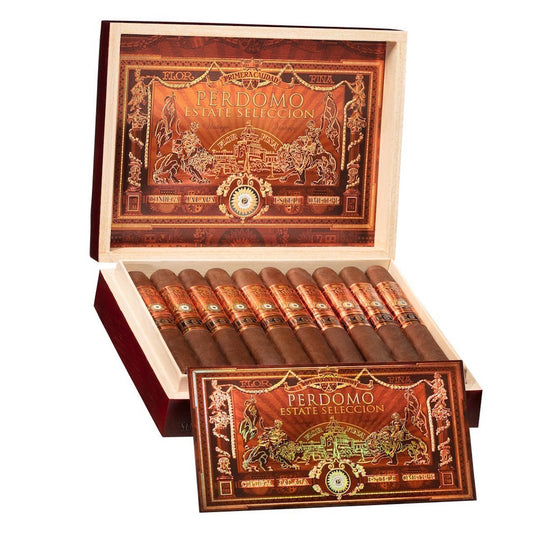 Sold out
Sold out




















